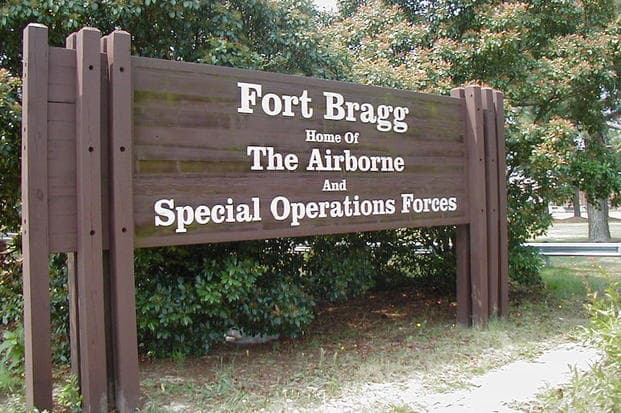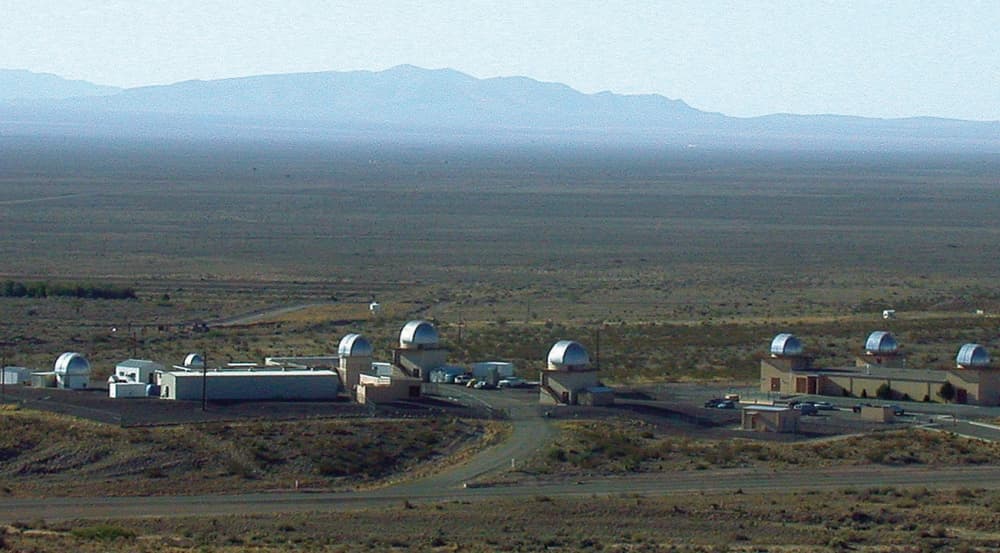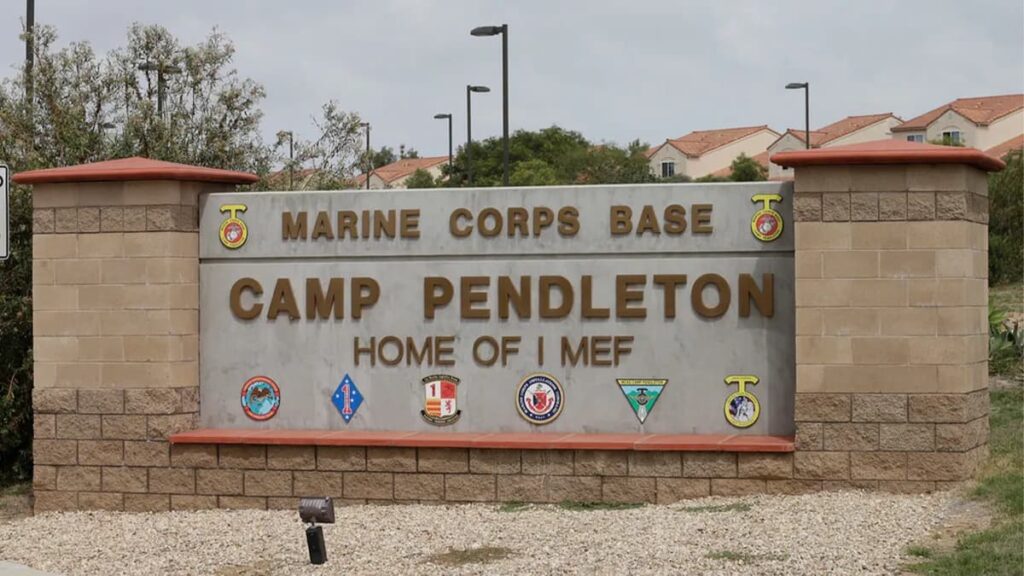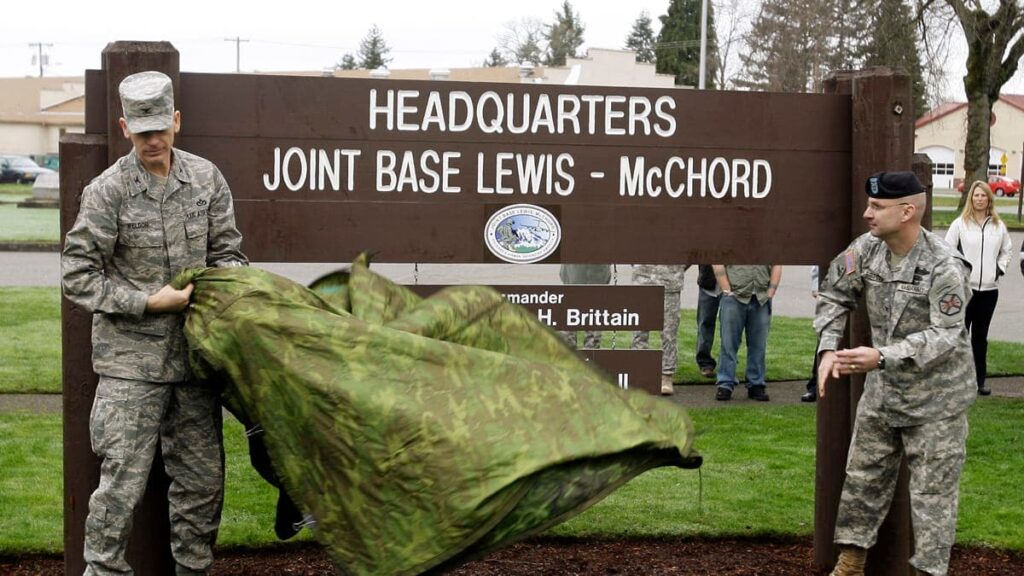There are U.S. military bases all over the world. Some are in foreign countries like Greenland, where the U.S. has Thule Air Base, deep inside the Arctic Circle. Others are in the United States. Generally, states with larger populations will have more bases than smaller ones. The Department of Defense (DoD) manages these sites.

Fort Bragg
Fort Bragg is a massive military base in North Carolina. It’s home to the XVIII Airborne Corps and numerous other units. Founded in 1918 as an artillery training ground, the fort is now one of the Army’s premier power projection bases. It’s also the site of many special operations activities.
Its history began in 1918 when the Chief of Field Artillery sought a location that offered year-round artillery training, had ample water and rail facilities, and had a climate conducive to artillery practice. He determined that the Hoke and Cumberland Counties area, now the heart of the Fort Bragg military complex, met these criteria. The fort was named after Braxton Bragg, a West Point graduate who served in the Mexican War and Civil War with the Union Army and the Confederate States Army.
After World War II, the fort was turned into the permanent home of the 82nd Airborne Division. In 1952, the U.S. Army Special Operations Command was established at the fort, further establishing it as a primary power projection base.
Today, the fort is home to more than 40,000 soldiers and more than 22,000 civilian employees. Its sprawling 251-square mile (650-kilometer) campus includes two major airfields, Pope Field and Simmons Army Airfield, where the U.S. Air Force stations global airlift and Special Operations assets. Fort Bragg is also the headquarters of the U.S. Army Forces Command, the U.S. Army Reserve Command, and Womack Army Medical Center.
Its importance in the military is evident in the fact that in the last century, its tenant units have deployed on short notice to Grenada and Honduras, to Albania and Kosovo, and to support Operation Allied Force/Joint Endeavor in Bosnia and Operation Joint Guardian/Rapid Guardian in Afghanistan. It has a strong commitment to environmental stewardship and has been involved in extensive wildlife protection and preservation on the base.
The fort is so important to the U.S. Army that it was the first active-duty military installation in the country to host a regular season MLB game in July 2016. The Atlanta Braves played the Miami Marlins at the new baseball stadium at Fort Bragg, which seats 12,500 fans.

White Sands Missile Range
White Sands Missile Range is a massive proving ground in New Mexico that’s home to everything from V-2 rockets to the latest space technology and weapons. The base also possesses an impressive history that spans the country’s most important conflicts, starting with World War II and continuing through today’s Global War on Terrorism. During the Cold War, the proving ground was known as the White Sands Proving Ground and the Alamogordo Bombing and Gunnery Range, but it is now better known as the White Sands Missile Range (WSMR).
The WSMR has been an important part of American military history from the beginning of the era of missiles. The base has been home to many major events, including the first high-altitude rocket able to be controlled in flight — the American-adapted German V-2 rocket, which was launched from the proving grounds in 1946. It’s also the birthplace of America’s space program, launching the first crewed lunar landing on July 20, 1969, when Neil Armstrong and Buzz Aldrin stepped on the moon.
In addition to its legacy in aerospace, the WSMR is a hub for testing the most recent military technology, such as electromagnetic railguns, which shoot projectiles with electric currents. Its staff includes some 6,500 highly skilled soldiers, civilians, and contractors. The WSMR has a strong relationship with local colleges, such as the University of Texas at El Paso and New Mexico State University, which helps keep its talent pool locally grown.
During World War II, the proving grounds were busy with activity as the country prepared for the war against Germany and Japan. One of the many sites at the proving ground was the Trinity Site, where atomic bombs were tested. The explosions caused by the bombs were so powerful they shattered windows hundreds of miles away.
Throughout the Cold War, the WSMR was an essential facility for testing missiles and other systems that supported the Apollo space program, the first astronauts to land on the Moon on July 20, 1969. The WSMR continues to support many research and development programs, including missile test programs, guidance and navigation systems testing, high-speed sled track testing, radar signature measurements, aircraft survivability tests, and weapon system flight testing.

Camp Pendleton
The I Marine Expeditionary Force calls Camp Pendleton home and other Operating Force and training commands. The base’s daily population exceeds 65,000 active-duty and reserve service members, civilians, and contractors, resulting in an economic impact in the region of over $6 billion. The 125,000-acre site in Southern California has a diverse ecosystem that includes beaches, bluffs, mountains, canyons, and the only free-flowing river in the region. Its varied geography provides the perfect setting for year-round amphibious and sea-to-shore training.
Camp Pendleton was named for major general Joseph Henry Pendleton, who died in February 1942 before seeing the completion of his dream of a West Coast base for the Marine Corps. The large base opened in September 1942 and quickly absorbed units from across the country as it trained for duty in the Pacific theater of operations during WWII. The vastness of the base allowed for use of all types of modern weapons and tactics, and its beaches provided ample space for landing training.
In the 1960s, Pendleton’s role grew as it prepared Marines for involvement in Vietnam. By the time the conflict ended, thousands of Marines had passed through the Base as they deployed to Southeast Asia. Pendleton also supported the evacuation of Saigon refugees during the war in 1975. The 1980s saw the Corps broaden its capabilities from “amphibious” to “expeditionary” as infantry, armor, supply, and air power were combined into self-sustaining air-ground teams that could deploy halfway around the world in days.
Today, the base continues to train Marines for global operations and missions. Its wide-open spaces and coastal climate allow for year-round outdoor training, as well as a variety of indoor facilities and ranges. Its diverse terrain features beaches, bluffs, mountains, mesas, and canyons that provide the opportunity for various tactical maneuvers.
The base is the largest Marine Corps training facility in the United States, with more than 120 square miles of land. Its diversity also makes it one of the most environmentally friendly bases in the Army, receiving a 2016 Secretary of the Army Environmental Award in the Small Installation category.

Joint Base Lewis-McChord
With its lush green forests, beaches, and hip urban populations, Joint Base Lewis-McChord is one of the most desirable military bases in the United States to be stationed at. It’s easy to see why when you consider that the area is home to some of the best training and resources in the world for both the Army and Air Force.
This sprawling, modern base is the only Army power projection base west of the Rocky Mountains. As such, it’s a hub for both military and civilian transportation and is used to support the mobilization of forces and equipment. It’s also home to the only airlifting hub that is capable of transporting C-17 Globemaster III aircraft.
In terms of historical significance, Joint Base Lewis-McChord was once a separate Army and Air Force base called McChord Field. In February 2010, the two bases merged to become Joint Base Lewis-McChord as part of a consolidation process following the 2005 Base Realignment and Closure Commission.
The facility was originally a municipal airport in Pierce County, built-in 1938. The government stepped in to beef it up when war broke out in Europe and Asia. The Public Works Administration got to work right away, building barracks, hangars, and housing. It was eventually renamed for Colonel William C. McChord, who died in a plane crash in 1937. During World War II, McChord served as a major bomber-training base, and nine airmen from the Doolittle raid trained here.
During the Vietnam War, McChord was once again a training site for both soldiers and Air Force pilots. The airfield was also pressed into service to track the Portland-to-Seattle flight that Dan “D.B.” Cooper hijacked in 1971. The base was also active in non-conflict missions, including search and rescue operations following the eruption of Mount St. Helens in 1980.
Today, Joint Base Lewis-McChord offers state-of-the-art training and infrastructure and responsive quality-of-life programs. It’s also home to a plethora of educational and recreational opportunities, including three libraries. The on-post libraries offer access to a variety of media, research, and communication resources, as well as classes and activities for all ages. You can find everything from a great selection of books and movies to free WiFi, computer stations, Microsoft Office products, and more.
